By Dana Ullman
“In Tanzania, it is as if we don’t exist,” says Salumu Kundaya Kidomwita, a Barabaig cattle herder whose name translates to “Warthog.”
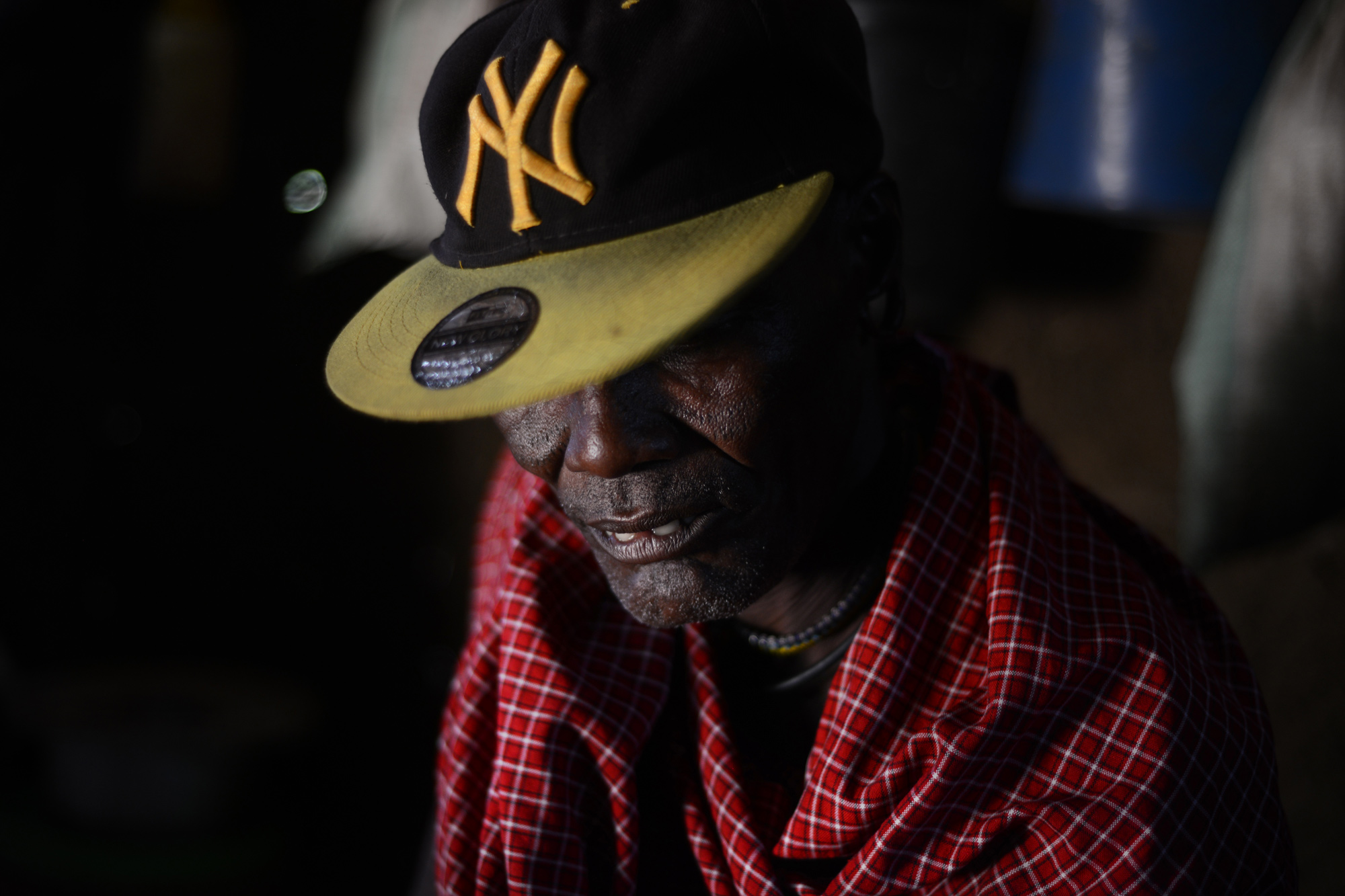
At the age of 60, Kidomwita is facing his second eviction in the last decade. After being pushed out of his home by a rice plantation in 2008, his new village of Kwa Wagonzi is being uprooted to make way for a dam that will provide irrigation for commercial rice and sugar farms. Like warthogs, who can live for several months of the year without water, the Barabaig had to adapt their herder lifestyle with similar austerity – they’re victims of competing interests for dwindling land and resources.
The World Bank initially required Tanzania to follow the bank’s policy for protecting indigenous groups such as the Barabaig and Hadzabe tribes. But they also gave a waiver to SAGCOT, an East African agribusiness project, which allows them to develop without following the bank’s Indigenous Peoples Policy. The decision is sparking fears among human rights advocates that the development lender is setting a precedent that weakens protections for indigenous peoples, but the bank maintains that indigenous communities will still be protected under procedures established for the SAGCOT project.

The Kilombero Valley, where the Barabaig people live, is one of the areas where SAGCOT is investing in commercial agriculture. The Tanzanian government launched SAGCOT in 2010 to promote economic growth in Tanzania’s southern corridor, which covers a third of mainland Tanzania and extends from the capital, Dar es Salaam, to Tanzania’s border with Zambia.
Over a 20-year period, SAGCOT aims to convert 350,000 hectares of land into commercial production, boost annual farming revenues by $1.2 billion and lift roughly 450,000 farming households out of poverty, the Tanzanian government said.
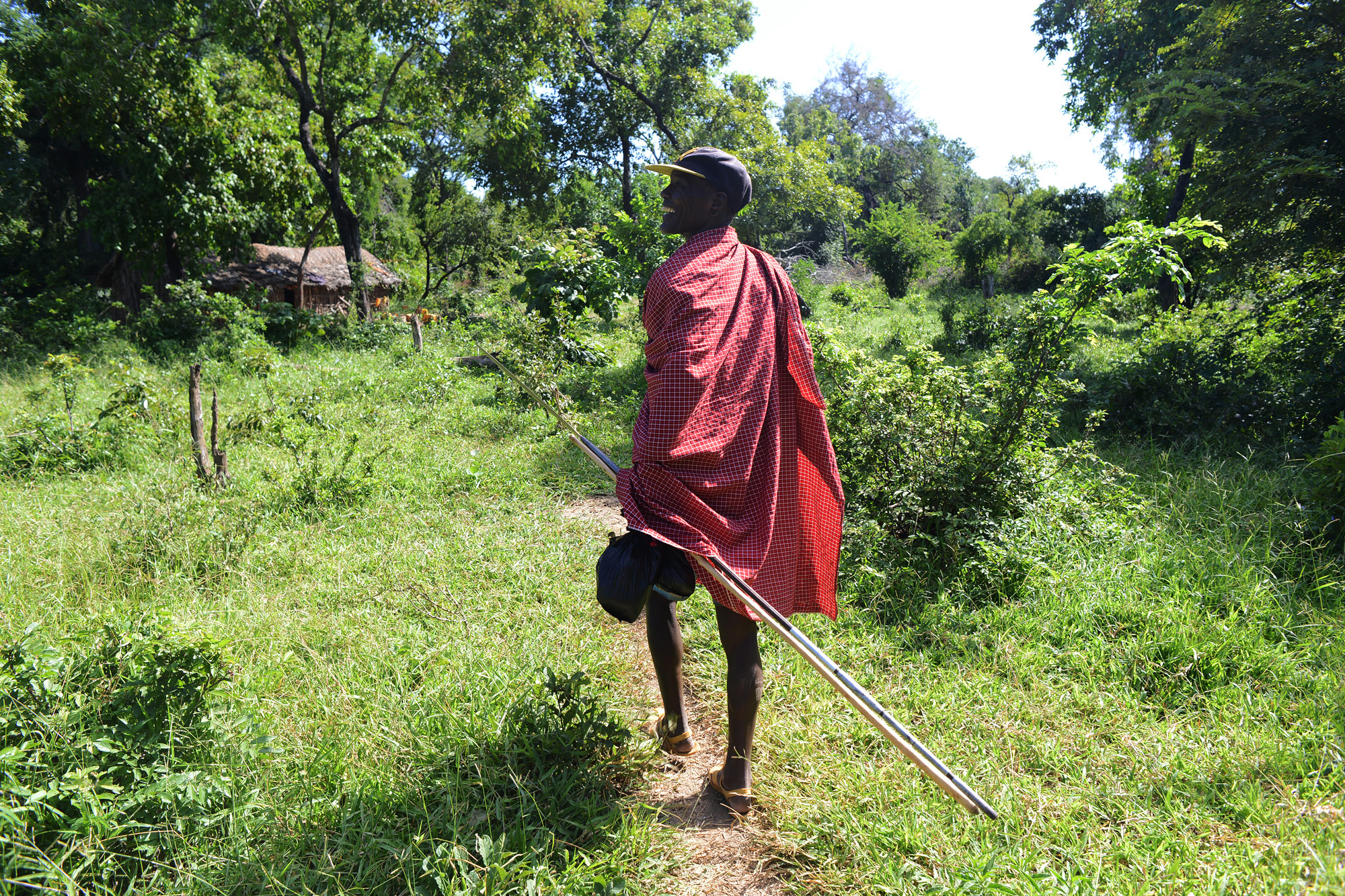
Salumu Kundaya Kidomwita, 60, saunters down a trail to his wife Malinja’s hut. He’s on his way back from market day in nearby Nambogo, where multiple tribes meet to sell everything from livestock to maize and cloth. Kiodomwita says he has a lot on his mind, but these thoughts are somewhat quieted by the rainy season – when “the grass is green, it is peace,” he says.
The Barabaig people’s lack of visibility, however, has led to many land disputes in recent decades.
“The Barabaig like to blend in and not disturb nature,” Kiodomwita says.

Kidomwita spends time with five members of his large family at their boma. He’s an elder of the tribe and has four wives and 22 children. Bomas are temporary abodes for the Barabaig made of found materials like dung, mud and sticks – these help the structures meld in with the surrounding environment, which is important for the Barabaig. They’re meant to be temporary abodes, since the Barabaig traditionally move with their herds throughout the year.
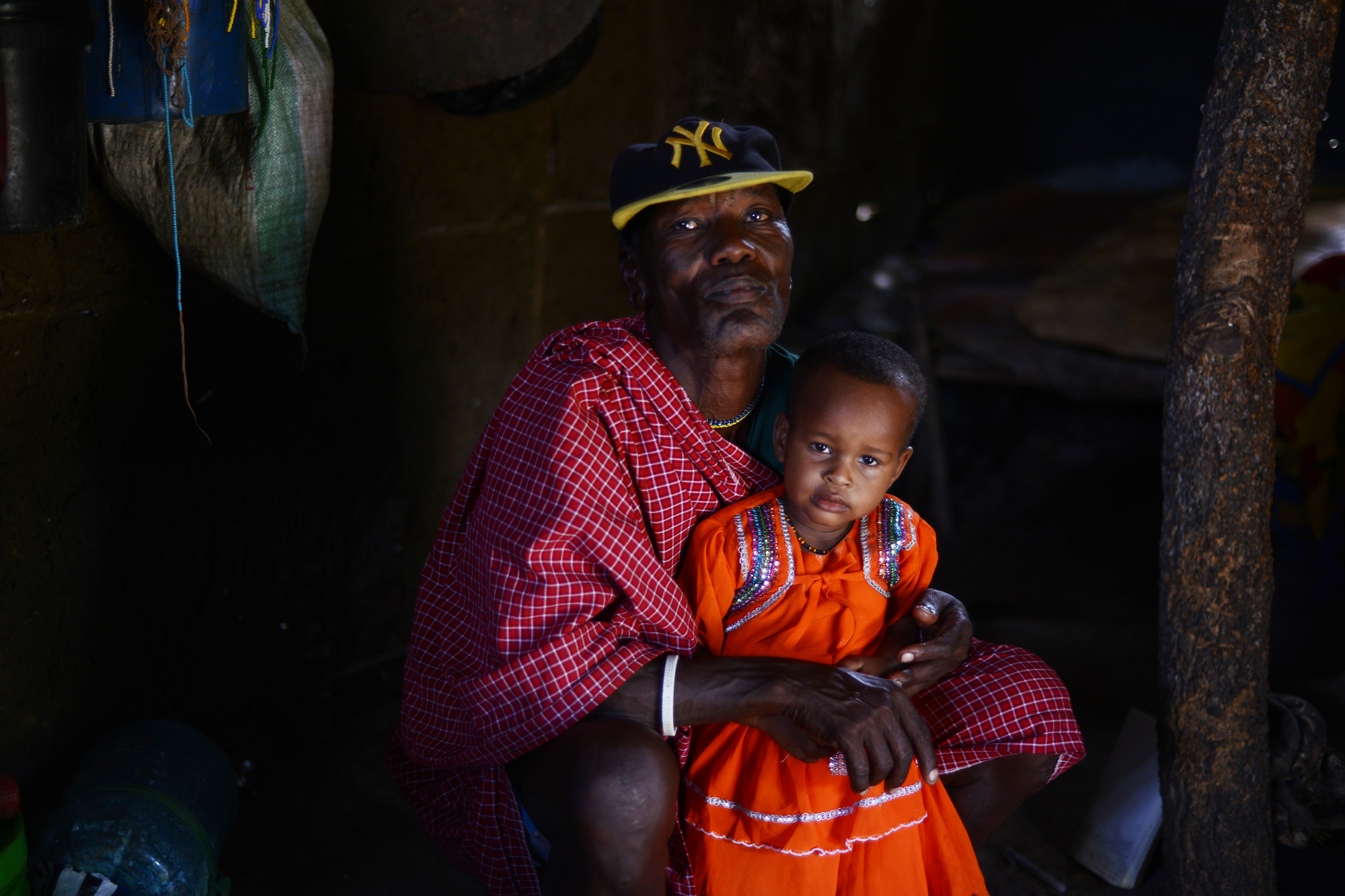
Kidomwita, 60, sits with 2-year-old Mama – the youngest of Kidomwita’s 22, going on 23, children.
“It’s hard to keep track,” admits Kidomwita, laughing.
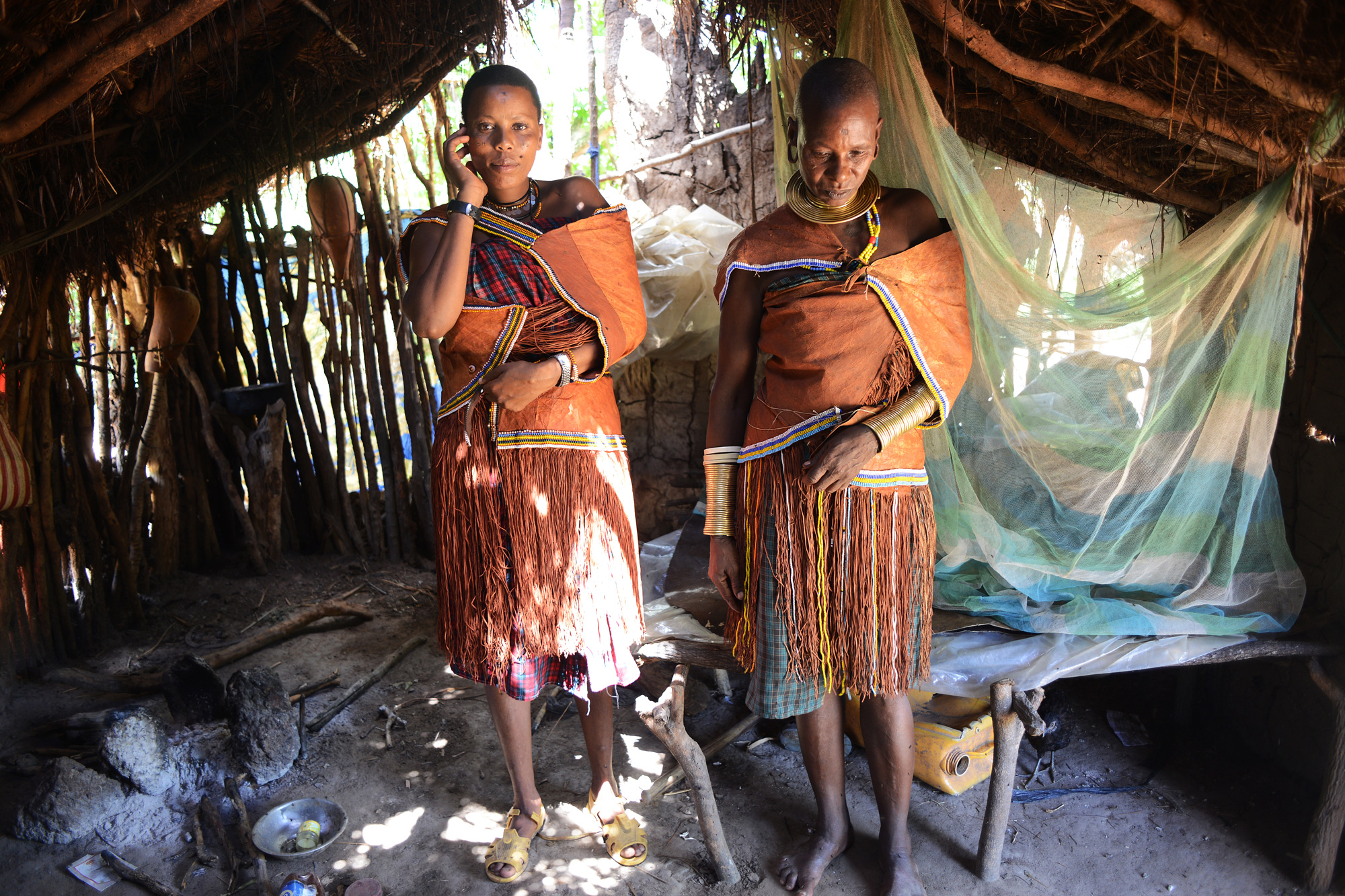
Udenda Gidaghorjod, 20, and her mother, Udangashega Wembida, 40, stand in traditional Barabaig dress at home.
“It is the farmers who are invited to meetings about our land, not us,” said Wembida, a mother of two from Kwa Wagonzi. “[Now] we are threatened with the bulldozers and roads being made for business. We are told by village leaders to go where we came — but that is here!”

Gidanmwahu Gopa, an elder Barabaig herder from Hanang, is resigned about the situation.
“I know we must leave but I don’t know where,” he says. “I have heard of the dam project in Kidunda and sugarcane plantations and I do not see how these land issues can be addressed when we have nowhere to go. We are not involved or compensated adequately.”

Barabaig herders move cattle from Nambogo market.

Udamugh, whose name means “waiting to heal,” plays with the yellow beads around her neck. She says she was forced to settle in Mkombani four years ago when park rangers from Mikumi National Park shot six of her cows, one by one, as she watched from inside her boma.
“No words were exchanged,” she says. “I was so upset. My family went to the district council to file a complaint but no one investigated. To this day we have not been compensated. To the government I say, tell us where to go to have peace.”
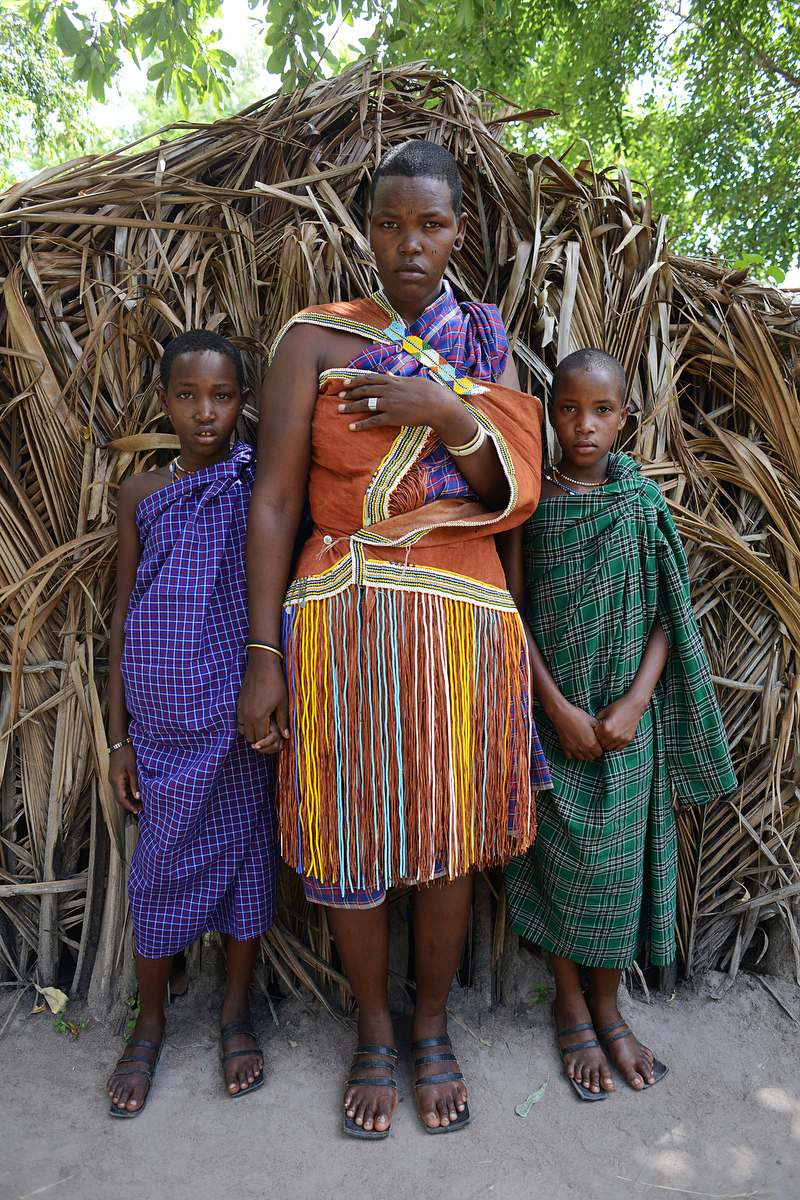
A Barabaig woman poses for a photo with her siblings. According to a report by the International Work Group for Indigenous Affairs, the Barabaig have been targeted for state-sponsored evictions for half a century. “Operation Barabaig,” a program designed to permanently settle Barabaig herders, actually forced families from their homes and seized their land for tourism and commercial agriculture.

“We are not settling well here,” says one Barabaig woman – the mother of a young child. “For decades, we move, come back, move, come back, chased by our government, the park rangers and farmers. We are tired. We are old. But the threats continue.”
This project was supported by The GroundTruth Project and the International Women’s Media Foundation. Read the full story here.

































